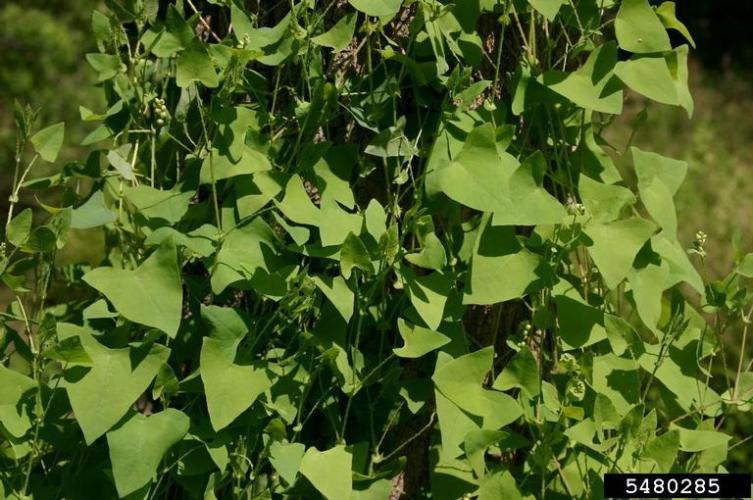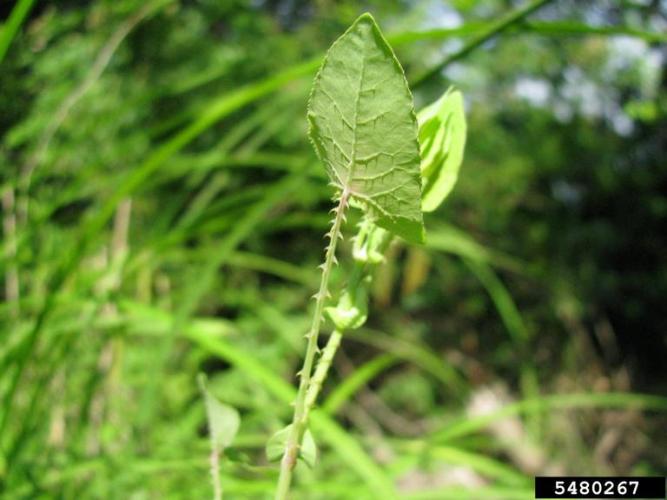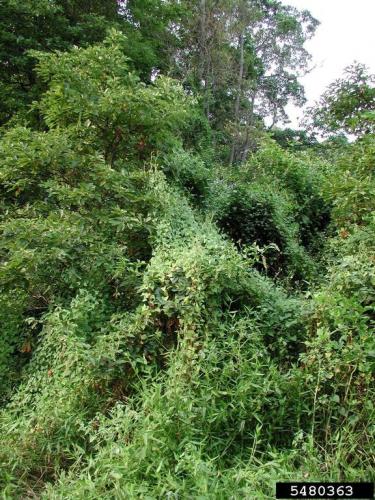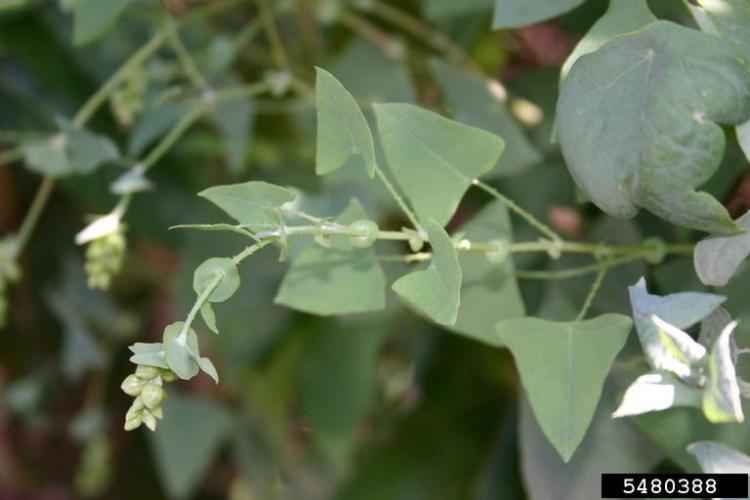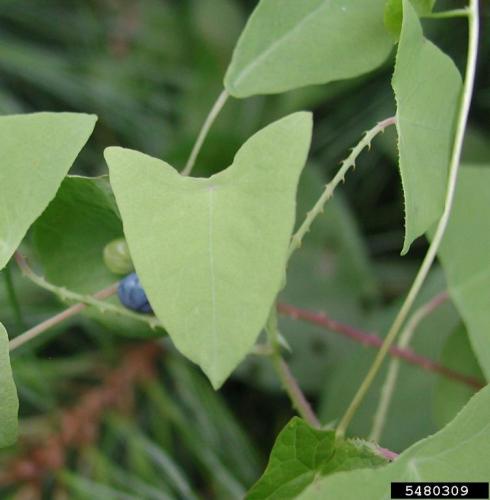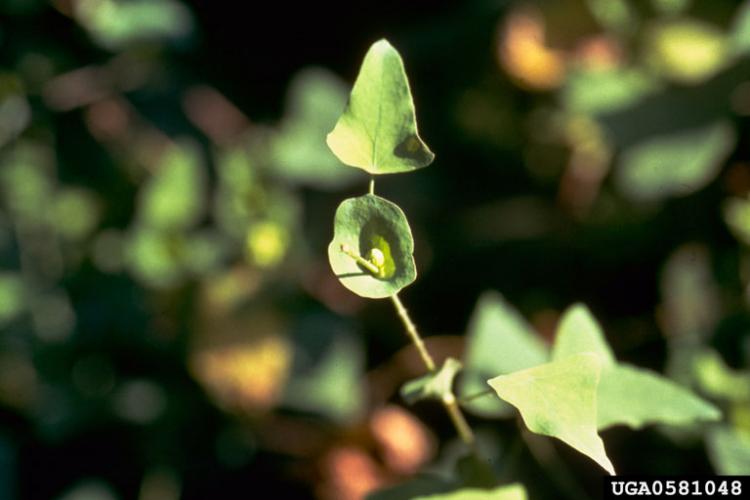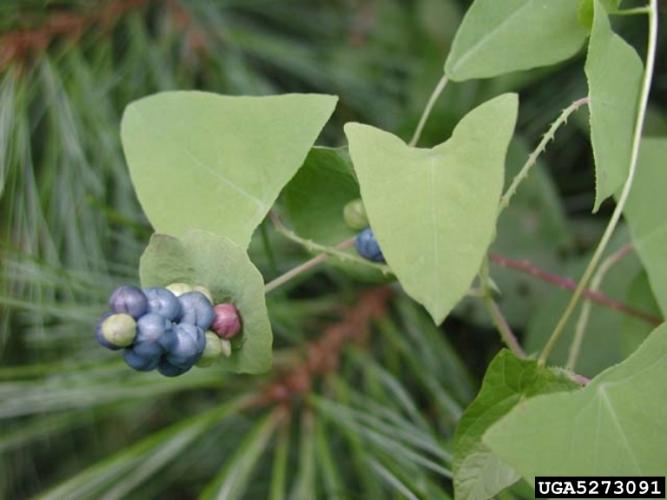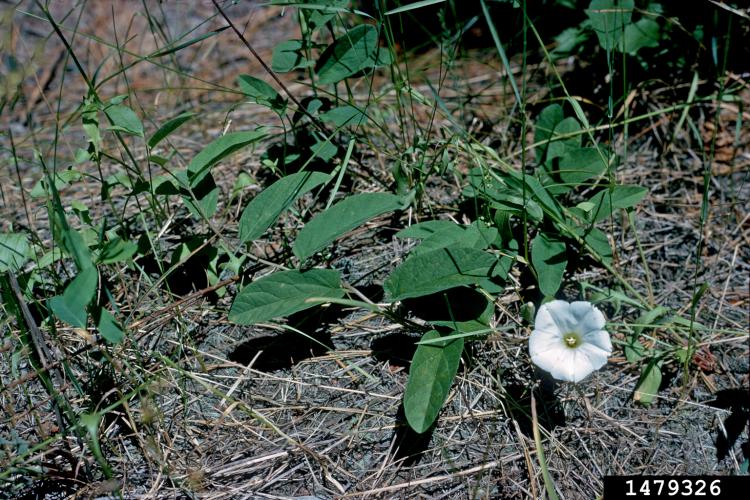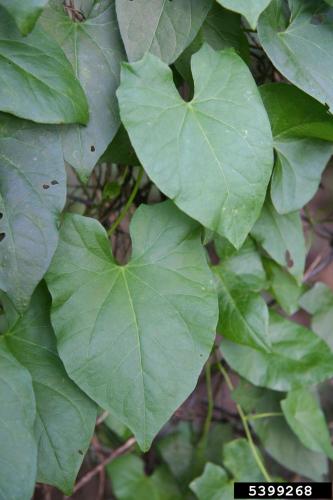Mile-a-minute vine
Identification
Appearance
Persicaria perfoliata is an herbaceous, annual vine that invades disturbed areas in Oregon and portions of the northeastern United States. The delicate stems are reddish, highly branched and covered with small, curved spines. Circular, leafy structures (ocreae) surround the stem at the base of the petioles.
Foliage
The alternate leaves are triangular, light green, 1-3 inches wide and barbed on the undersurface.
Flowers
Small, white, inconspicuous flowers arise from the ocreae (a structure formed of stipules fused into a sheath surrounding the stem).
Fruit
Fruit are present in mid-July through the first frost, are metallic blue and segmented with each segment containing a single black or reddish black seed.
Biology
This is considered a watch list species
Origin
Mile-a-minute vine is native to Eastern Asia and the Philippines and was introduced several times into the United States from the late 1800s to the 1930s.
habitat
Man-made or disturbed sites, meadows, and fields.
Life Cycle
Mile-a-minute weed is primarily a self-fertile plant and does not need any pollinators to produce viable seeds. Seed production takes place from June-October. Seeds can be viable in the soil for up to 6 years and can germinate at staggered intervals. Vines are killed by frost and the seeds overwinter in the soil. Mile-a-minute seeds require an 8 week cooling period (at temperatures below 10 degrees Celsius) in order to flower. Germination happens in early April through early July.
Seeds are dispersed by birds, deer, chipmunks, squirrels, and even one species of ant.
Mile-a-minute weed seeds can float for 7-9 days, which allows for long distance movement in water. This movement can be amplified during storms when vines hanging over waterways drop their fruit into fast moving waters, which then spread the seeds throughout a watershed.
Ecological Threat
Mile-a-minute vine invades open disturbed areas such as fields, forest edges, roadsides, ditches and stream banks. Its rapid growth allows it to cover existing vegetation and restrict light availability, potentially killing plants below. Dense mats of the vine restrict establishment of new vegetation.
Vermont Distribution
Citations
Photo credit
Mile-a-minute vine foliage, 5480285, Leslie J. Mehrhoff, University of Connecticut, Bugwood.org.
Mile-a-minute vine leaf and stem, 5480267, Leslie J. Mehrhoff, University of Connecticut, Bugwood.org
Mile-a-minute vine infestation, 5480363, Leslie J. Mehrhoff, University of Connecticut, Bugwood.org
Mile-a-minute vine flower, 5480388, Leslie J. Mehrhoff, University of Connecticut, Bugwood.org
Mile-a-minute vine leaf shape, 5480309, Leslie J. Mehrhoff, University of Connecticut, Bugwood.org
Mile-a-minute fruiting spike, ocreae, and barbs, 5273091, Leslie J. Mehrhoff, University of Connecticut, Bugwood.org
Mile-a-minute vine flowers inside cup-like leaf bracts, 0581048, Jil Swearingen, USDI National Park Service, Bugwood.org
Hedge bindweed flower, 1479326, Alex Katovich, Bugwood.org
Hedge bindweed leaf, 5399268, Robert Vidéki, Doronicum Kft., Bugwood.org
information credit
Center for Invasive Species and Forest Health, Mile-a-minute vine
